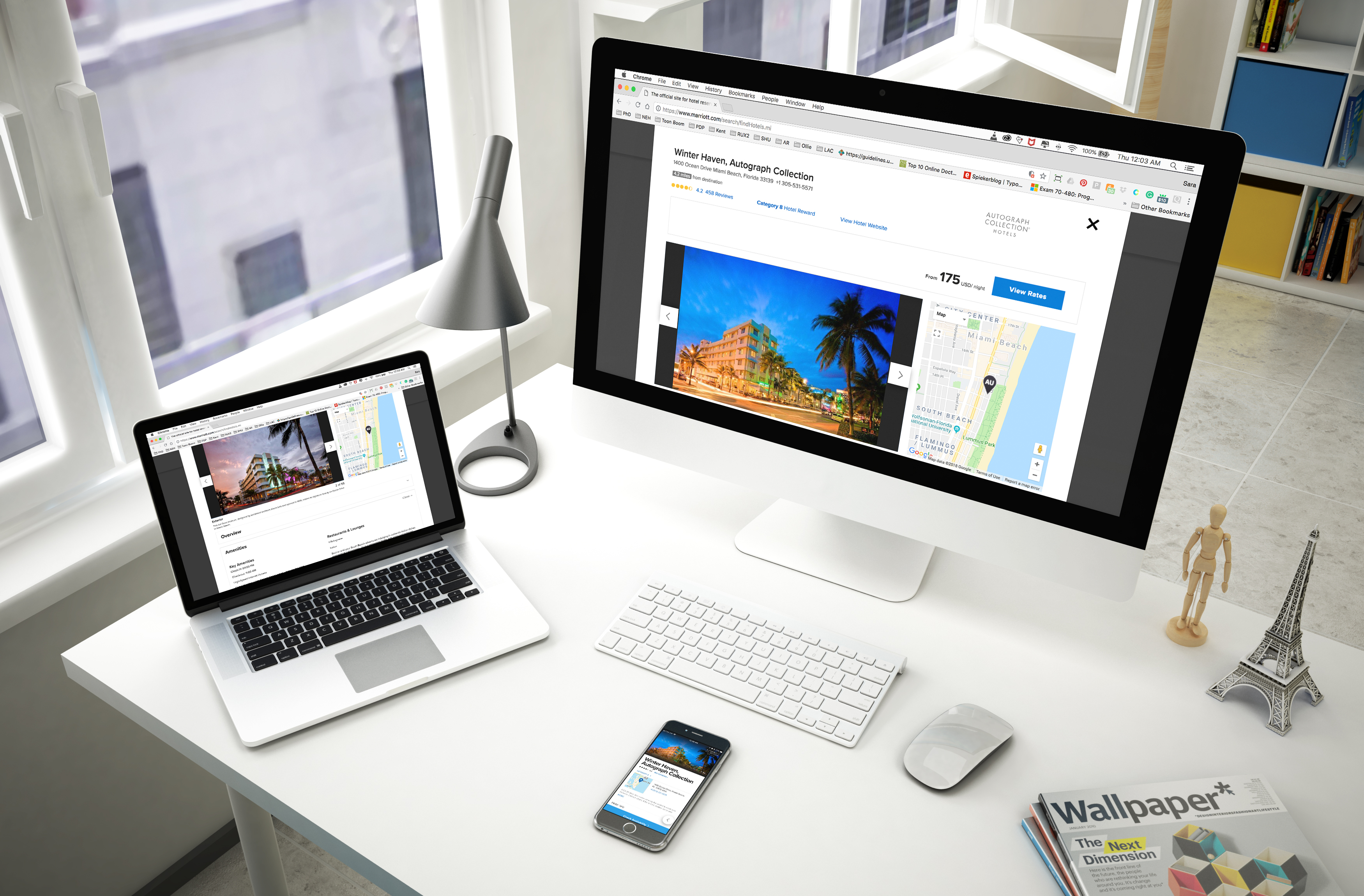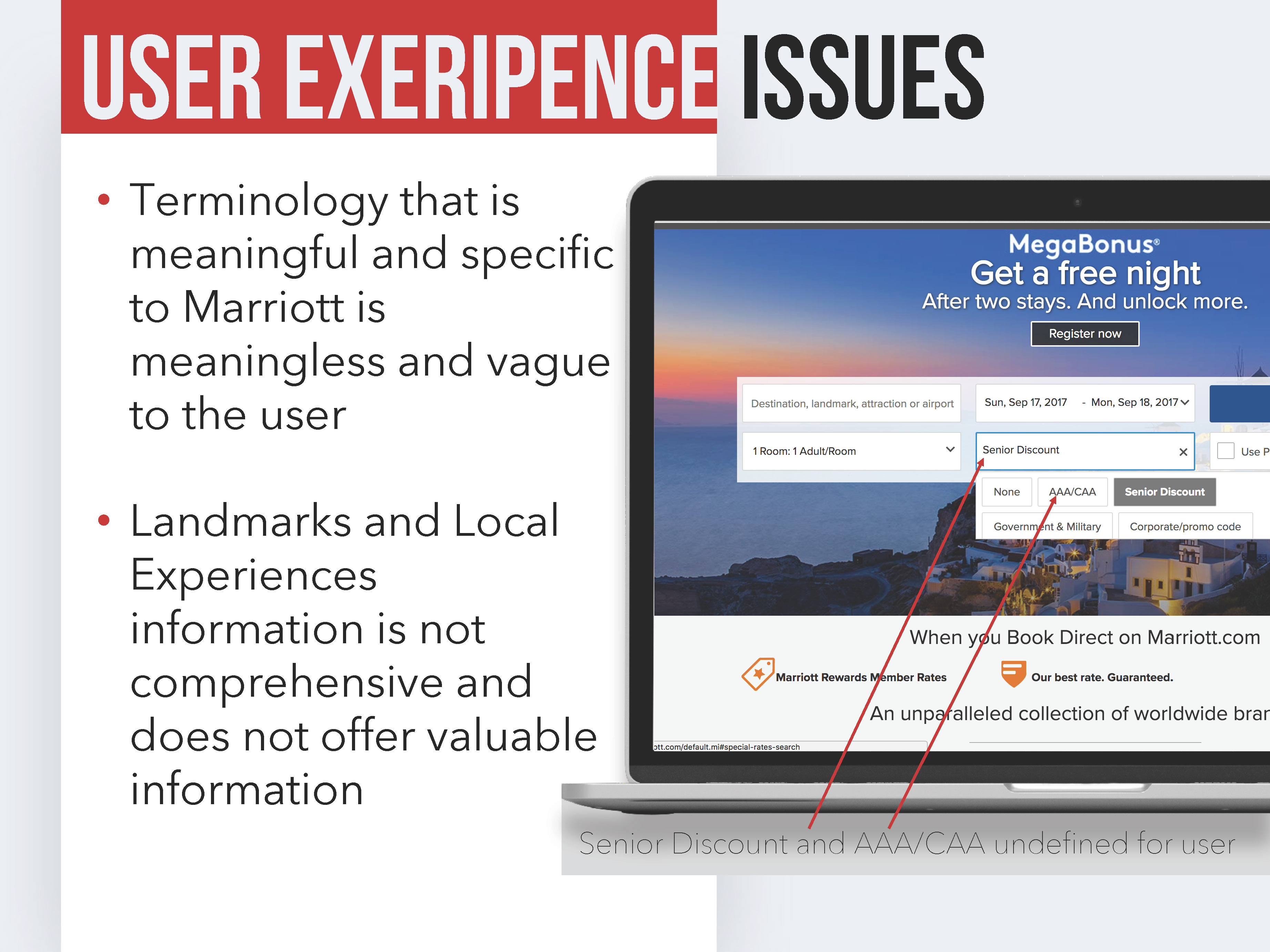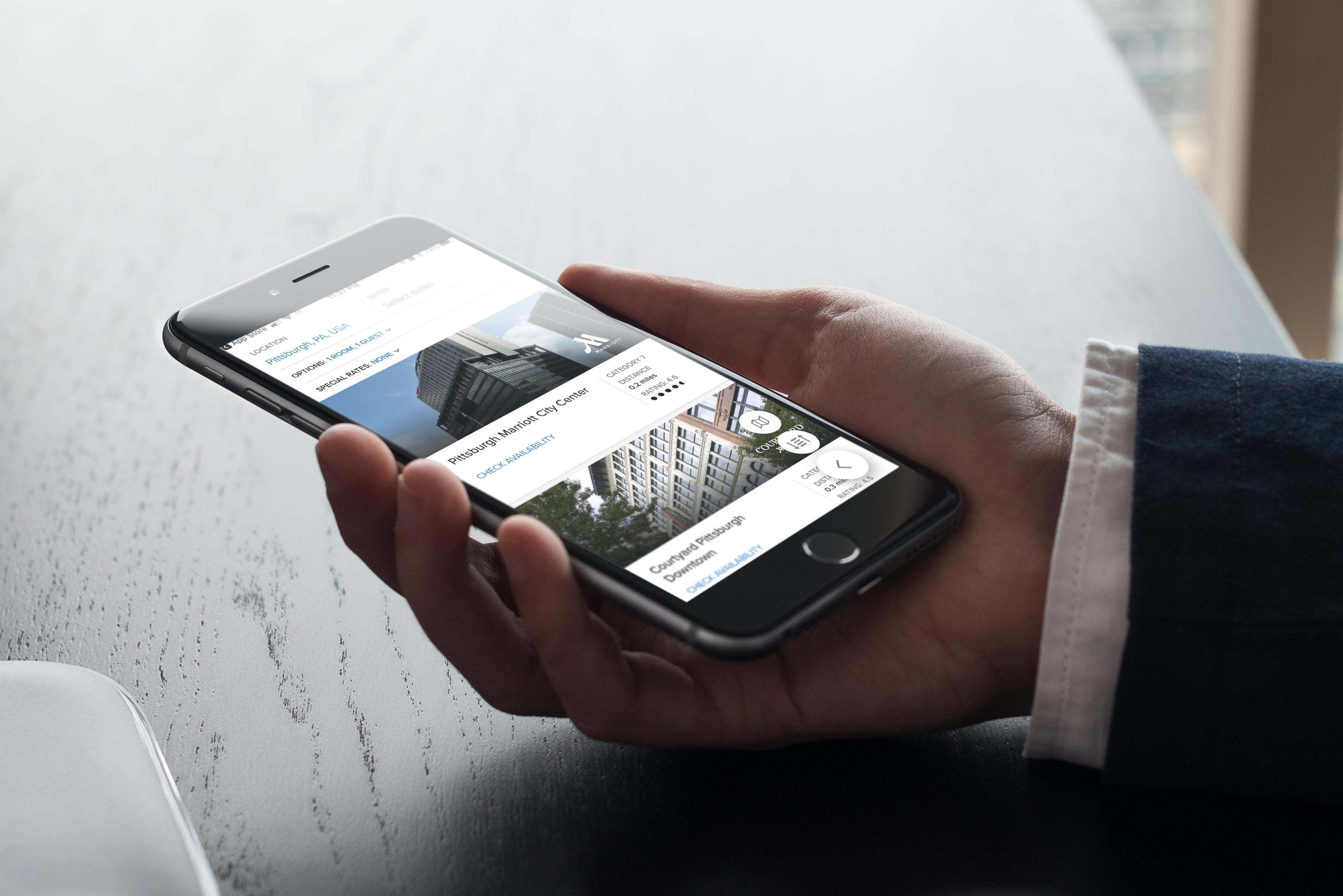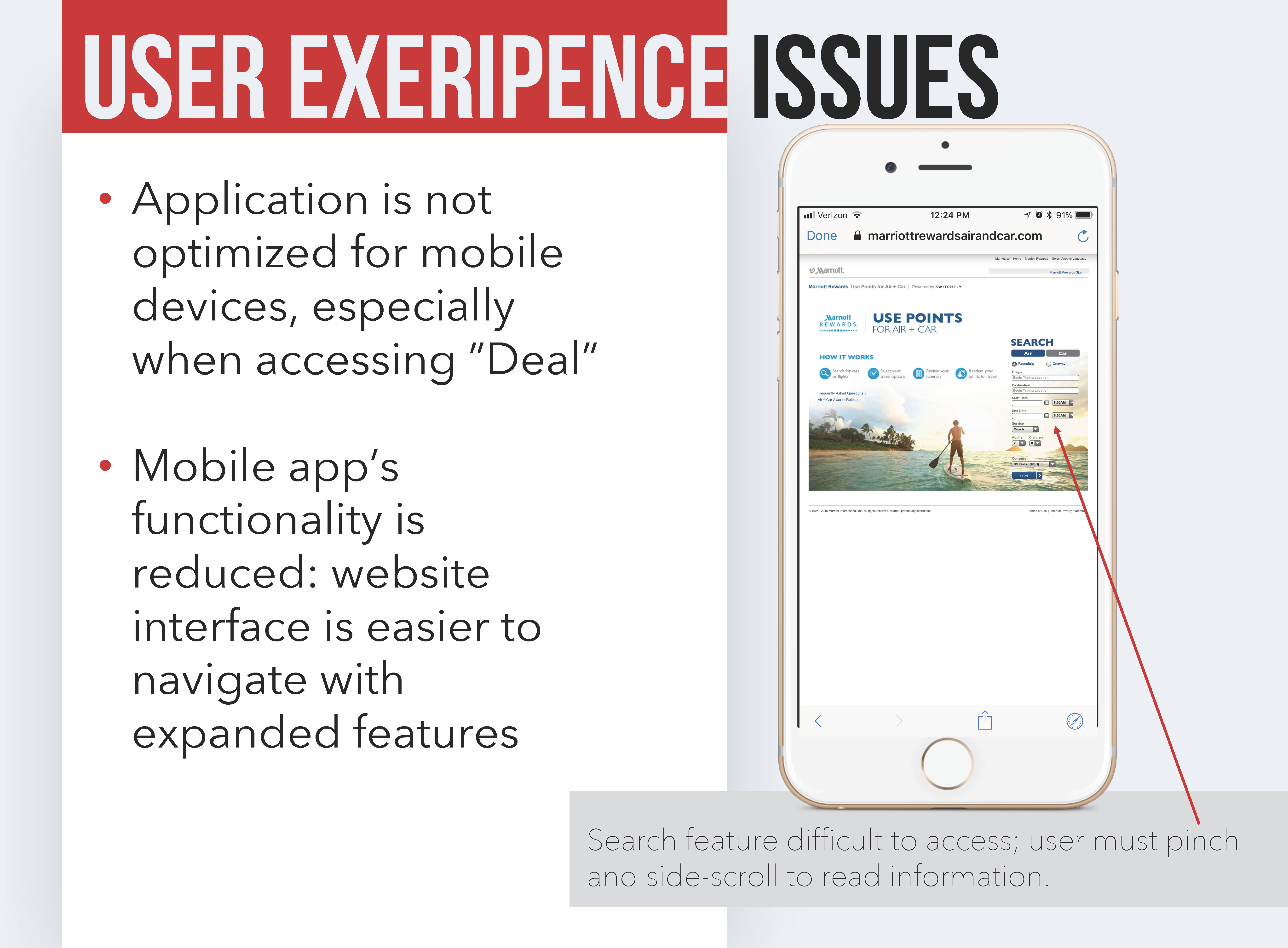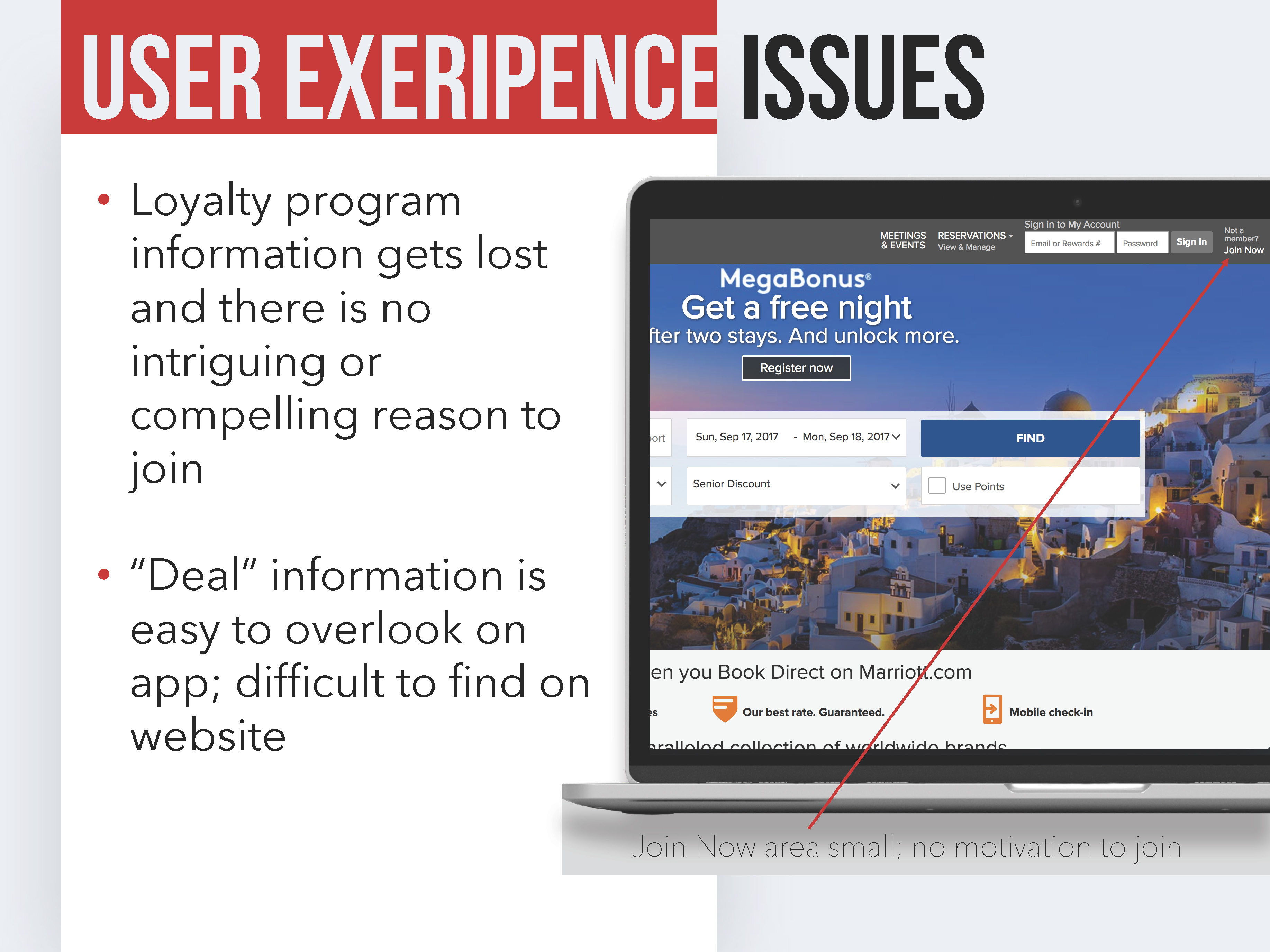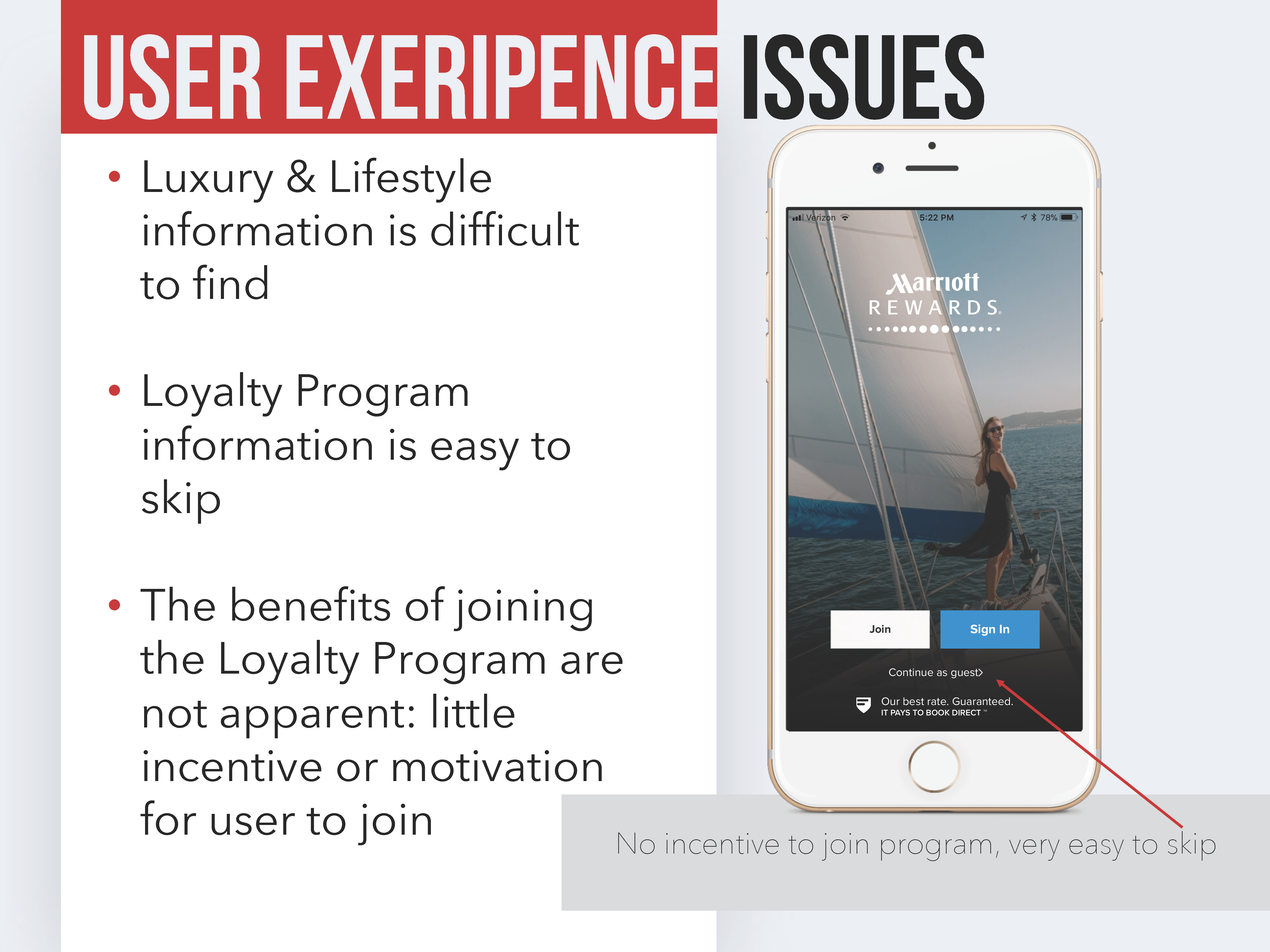
Marriott
UXD60201 Researching User Experience I
Throughout Researching User Experience I, I focused on conducted user-based research on Marriott and their online booking experience. This included background research on the company, their web-based and mobile-based booking applications, and interviewing individuals who book hotels often.
Year
2017Topic
User ResearchDeliverables
PDF, Powerpoint Presentation with audioThroughout the course, I completed the following activities:
- Writing a Nano Usability Report
- Creating a Research Memo
- Developing User Research Goals & Questions
- Conducting User Research Interviews
- Analyzing and Communicating User Research Findings
Conducting a Nano Usability Test
Nano usability tests are a type of guerilla or informal user research. Using three people who book hotels or will book hotels soon, I observed their behavior while using Marriott’s website, mobile phone, and tablet based booking systems. Notes were taken and then compiled into a short usability report. The report consisted of:
- Analysis of the user’s session
- Commentary on the tasks that gave the participants problems
- Suggestions for future user research
- Perspective on the reason to complete further user research
User Research Memo
In order to request and justify user research, a brief research memo was written to convince stakeholders user research will benefit their project long term. Since many people want to jump into developing and designing without proper research, it is imperative they understand why user research is very important. The memo included:
- An introduction with a succinct description of the information being presented
- A brief summary on why research is beneficial
- 4-5 specific examples from the nano usability test where the interface could be improved
- An informed opinion on why research must be inserted into the project development timeline
User Research Goals & Questions
Continuing the work from the User Research Memo, the goals and questions were drafted to implement a research plan. The document included:
- Business Goals
- Increasing hotel bookings via digital booking processes by 10%
- Increasing reservations for their Luxury & Lifestyles Collection
- Gain 10,000 incremental members of the Marriott Rewards loyalty program in the first quarter after the redesign
- Decrease by 20% the number of people who abandon a reservation
- Increase by 5% the number of people bundling hotel and flight packages
- User Experience Questions
- Who, demographically, books online?
- How to people choose a hotel?
- Why do people abandon a reservation?
- When do people use the website instead of their mobile application?
- What value are customers searching for with their loyalty program?
- Executive Summary
- 8-12 User Experience Issues
- 3-5 User Experience Research Goals
- 5-7 General Research Questions
- 10-15 Specific Research Questions
- Recommendations for future development
Conducting User Research Interviews
Approaching the user research interviews required a structured plan. This plan was broken down into the following steps:
- Creating an interview plan summarizing research intent: user research goals, user research goals, and hypotheses.
- Drafting of an interview guide: a general script to be used with all interviews for consistency. This was broken down into the introduction, the warm-up, interview questions, the cool-down, and the wrap-up.
- Conducting the interviews with three people who have used or plan to use online or mobile booking applications.
- Interview Summary: demographic information, frequency of hotel booking, environment in which the interview took place, and a brief narrative of the interview.
Analyze & Communicate User Research Findings
The final project pulled together all of the research compiled throughout the semester. Within the findings the following areas were created:
- Executive Summary
- Background
- Business Needs
- Research Goals
- Research Methods
- Data Analysis
- Research Results
- Research Recommendations
This report was limited to no more than 25 slides in PowerPoint, Google Slides, or Keynote and had to be under 5 minutes in length.
The following deliverables were created:
I enjoy research. I always have. In any design-based solution it gives you the foundation to make solid choices for your client. It provides you with answers, allowing you to not guess what may or may not be acceptable. It also removes your personal bias from the project. Clients will more readily accept your solutions if you have information backing your solution.
Unfortunately, research is so often overlooked. I see it not only in the professional world, but with my students. They want to quickly jump into the design process without understanding the situation. I will ask why they chose a specific color and they say, “Because I like it.” It’s a hard hurdle to clear, especially now that I am teaching in a Fine Arts program.
This course was refreshing and challenging. It gave me a look at research outside of books and articles. Having to sit down, observe, and discuss the hotel booking process was much different from my usual research process – which is solitary and isolated. But the insights I gained were invaluable, as were the research methods.


